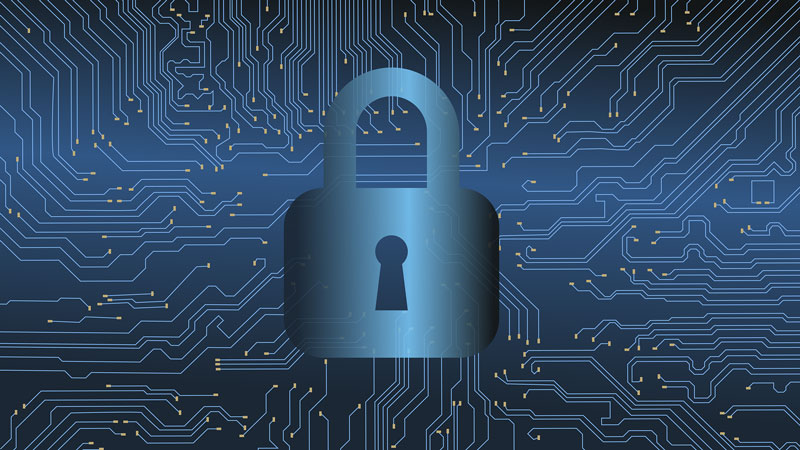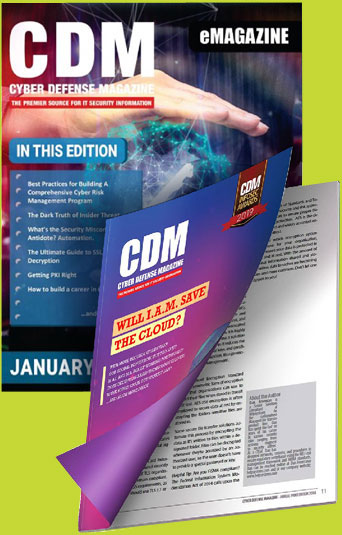A Tactical Perspective in a Post-Pandemic World
by Tyler Ward, CISSP, MBA, GCIH, GSEC, VP, Security, IGI
The COVID-19 pandemic has led to an influx of new cyber-attacks, trends, and more importantly, perspective. The world has changed in many ways during the pandemic and the effects of this will be long-lasting and will have continued impacts on cybersecurity for the foreseeable future. To calculate the cybersecurity aftermath of the pandemic, we must first delve into the world prior to this crisis to determine what has changed, both temporarily and permanently. In measuring these aspects, the post-pandemic picture can be painted to give us insight into what to expect, avoid, and where to focus.
From the perspective of a military veteran that served in two vastly different war zones, and as a former member of the U.S. national intelligence community, the parallels of a chaotic pandemic situation and wartime offer stark similarities. Looking through this lens, we must compare such battlespaces to that of our new world in order to defend against threats and achieve victory over our adversaries in cyberspace. As many military members can attest, areas that have undergone extreme and abrupt negative changes in social, economic, or government aspects offer new avenues for adversaries to capitalize. The pandemic has also served as this catalyst for cyber-criminals as well. Threat actors leverage times of uncertainty and extreme/abrupt change to stack the deck in their favor. While the public is focused on a “common enemy”, the adversaries will seek to pinpoint weaknesses in defenses while attention is averted to the main public concerns. In this case, cyber-criminals will be exploiting society in ways that that the commercial sector has not yet seen, or at least not to the levels that it will reach.
Cybersecurity and information technology jobs have been displaced, furloughed, or completely dissolved. Budgets for cybersecurity tools and services have significantly diminished. Most of all, we have increased the threat landscape outside of the logical and physical boundaries of protected networks. While all of these aspects have exacerbated the vulnerabilities within organizations, cyber-attackers are using and will continue to leverage sleight-of-hand. Our adversaries will be planning and executing on sophisticated attack plans to achieve their malicious goals. Additionally, some talented cybersecurity professionals that are not able to work may also moonlight as black hat cyber attackers. Imagine a young cybersecurity professional that was in their first year of work that recently lost their job due to the pandemic. They are one tor node away from joining the ranks of cyber-attackers on the dark web. However, these former cyber-pros are equipped with something more impactful than their career criminal counterparts; internal insider knowledge. We will likely witness one of the largest transitions from white hat to black hat hackers that we have ever seen. Once a taste of this lifestyle is realized, it will be difficult to lure them back into the workforce.
Organizations that were previously brick and mortar are now completely remote. Remote work will be more prevalent moving forward and that opens organizations up to many more concerns surrounding cybersecurity at a macro level. Furthermore, the micro level considerations surrounding remote work must also receive attention. Loss of sensitive data due to lost or stolen devices, privacy concerns from data boundaries being broken, and lessened security within home or remote networks are very real concerns for many but are also extremely opportunistic aspects for attackers. These will be exploited and we must stand our ground.
Those who have witnessed the unfortunate nations and regions that have undergone massive changes know that when societies are rattled to their core, factions of criminals seem to become more courageous. The battlegrounds in cyberspace will be dramatically different in a post-pandemic world than before in a steady global baseline status. Technology, business, and cybersecurity trends were rather predictable for the good guys before and the fight was already difficult. However, in a world where many things have changed, we will be fighting on new frontiers that have never been experienced by most.
As organizations, we must take a step back and realize that many of our game plans have changed. Organizations need to take on a new tactical approach to cybersecurity and understand what their environments and operations look like today; not yesterday. Life has changed in nearly every sense of the word. Vigilance is a word that each and every person must embody when it comes to cybersecurity and that is true now more than ever. Budgets have been restructured, cyber-defense professionals are looking for work, remote work is the new normal, and our adversaries in cyberspace are taking new chances.
Innovation is key and in order to combat the new threats that we face, the cybersecurity industry as a whole must come together to protect the greater good of their organizations and proactively prepare and respond to the new malicious tactics that will be mounted on us. Get tactical, be resourceful, and remain mindful of the shift in the cybersecurity paradigm.
About the Author
Tyler Ward is the Vice President of Security for IGI Cybersecurity (igius.com) with 15 years of experience in IT and Cybersecurity. He is an Air Force veteran in cyber operations, and a dynamic presenter in the Cyber Intelligence Community. He is currently the leader of IGI’s cybersecurity services practice, specializing in vCISO, compliance, Incident Response, MDR, Pen Testing, and more.
Tyler can be reached online through LinkedIn (Ty Ward) and at our company website https://igius.com.


